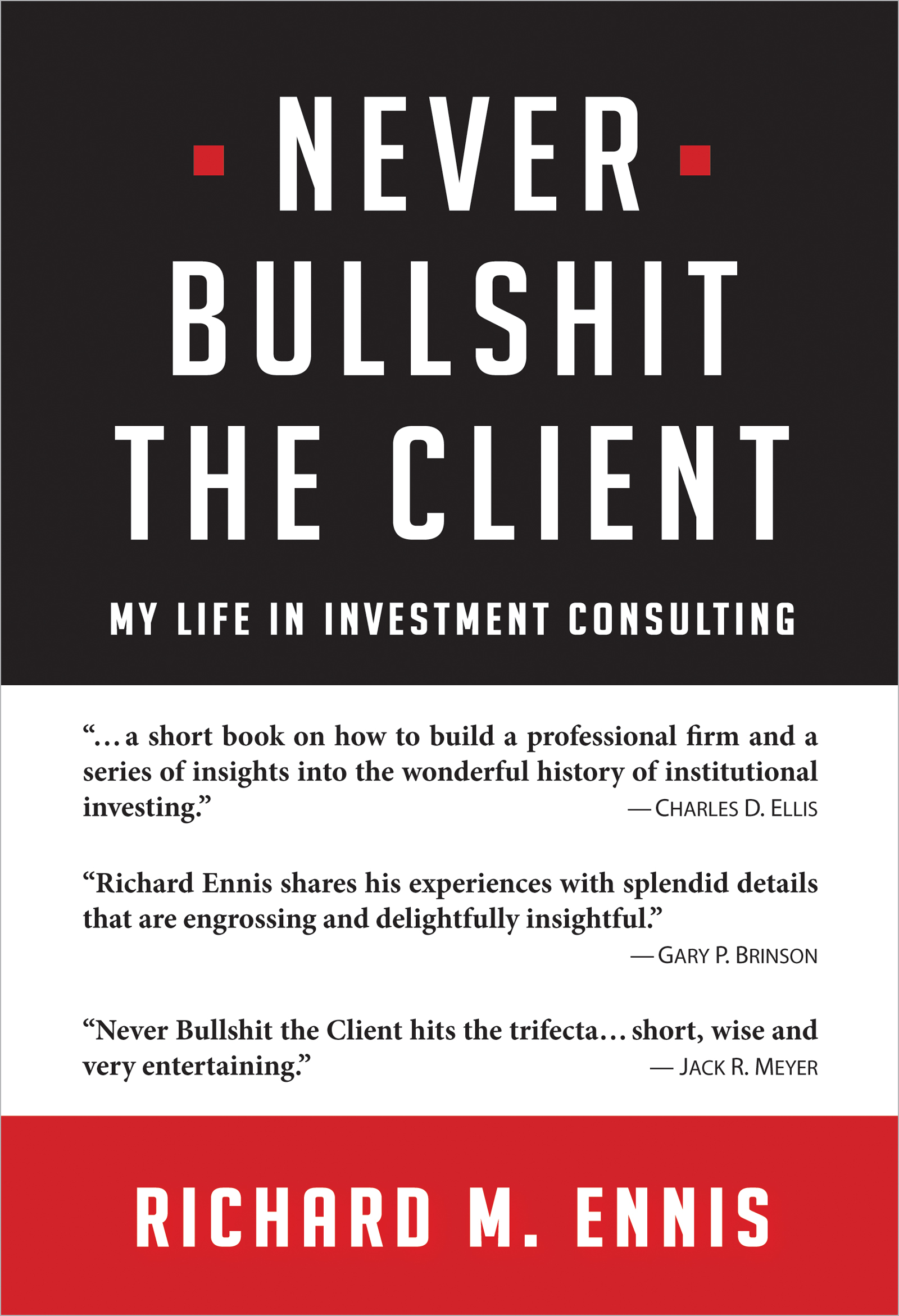Big Bond Bust
With stocks, private equity, hedge funds, real estate and commodities losing 20–40 percent of their value in 2008, it was a great year for bond portfolios to fulfill their promise as investors’ main source of downside protection. Investment-grade bonds did just that: The Barclays Capital Aggregate Bond Index returned 5.2 percent in 2008. A 35 percent portfolio allocation to assets earning a positive 5 percent return went a long way to blunt otherwise abysmal market returns. Alas, many investors did not enjoy that type of protection from their actively managed “core” and “core-plus” bond portfolios. Most core-plus portfolios actually lost money in 2008. A distressingly large number, including those of some prominent bond managers, suffered declines of up to 15 percent. Reflecting on the perplexing experience of 2008, a bewildered client asked, “When did our bond managers stop buying bonds?”
Bond portfolio management began to morph more than 35 years ago. Even back then, managers realized that if their portfolios were limited to the credit-rating restrictions of an investment-grade bond index, consistently beating the index net of fees would be difficult to do. And so began a long cycle of “enhancing” bond portfolios’ return potential. It started innocuously enough with the inclusion of split-rated bonds, whereby one agency’s rating met the cutoff for investment grade but that of another did not. Downgraded bonds were selectively retained. And the odd below-investment-grade bond was added to the portfolio with the client’s approval.
From there, bond managers began seeking authorization to place a percentage of assets—say, up to 10–15 percent of the portfolio—in bonds with ratings one or two notches below the investment-grade limit. As time passed, this and other variance percentages grew to as much as 40 percent of the total as emerging market debt, non-government-backed mortgage-related securities, and other types of assets that fell outside the benchmark became fair game.
The derivatives markets opened up new frontiers for creative risk taking. Now, some flagship bond funds encompass long and short exposures with notional values several times that of invested capital. Some funds sell protection via the credit default swap market. Others maintain thousands of complex positions. And some resemble leveraged fixed-income arbitrage hedge funds. When all is said and done, this is not your father’s bond portfolio. Through it all, however, by convention, core-plus strategies have generally been benchmarked against investment-grade bond indices.
Most core-plus bond portfolios exceeded the return of the Barclays Capital Aggregate Bond Index with a fair degree of consistency in the years leading up to 2008. This performance reflected the collective payoff of numerous risks that had little to do with the coupon payments and yield-curve dynamics of the bonds that make up the index. But 2008 was a year of reckoning; as noted, after several years of steady, moderate gains, many of these funds experienced extreme losses. When the credit crunch finally hit, heavy reliance on credit securities was a big part of the problem. As is typically the case when credit markets are stressed, flight-to-quality liquidations became an important dynamic that put downward pressure even on bonds of solvent issuers. Fixed-income-arbitrage positions often have subtle, complex liquidity characteristics of their own. Thus, acute liquidity effects exacerbated the losses of many aggressive strategies.
The high-octane bond strategy is reminiscent of what Andrew Lo describes in “Risk Management for Hedge Funds.”1 Lo illustrates the performance of a hypothetical hedge fund, Capital Decimation Partners, that produces steady profits for many years by selling deep out-of-the-money put options, only to have its day of reckoning. Referring to the strategy’s asymmetric payoff pattern, Lo notes, “This is a very specific type of risk signature that is not well summarized by static measures such as standard deviation” (p. 23). And so it is with core-plus bond management.
For the 10 years ended 30 June 2009, the average return of 94 core-plus bond funds in the eVestment Alliance eASE Database was 6.09 percent before fees. (That figure reflects the inevitable upward bias associated with self-reporting and survivorship.) Over the same period, the average return of the Barclays Capital Aggregate Bond Index was 5.98 percent. The average fee for accounts of $25 million is 37 bps, which places the average net performance differential at −26 bps. One would think that this record would dim considerably the luster of core-plus.
Is this editorial yet another tirade on the diseconomy of active investment for most investors? To be sure, it is not. Rather, I call into question the suitability of such investment techniques for that part of the investor’s portfolio that bears the brunt of providing downside protection. In 2008, we were reminded that presumed moderate correlation of risky assets is an unreliable source of downside protection in extreme market conditions. Once again, we realized that genuine and reliably high-quality fixed-income investments constitute the one and only true bulwark against loss in growth-oriented portfolios.
If old-fashioned bonds belong in the bond portfolio to preserve its integrity, where should advanced, aggressive fixed-income strategies be allowed to come to full flower? In my last editorial, I proposed a simple approach to asset allocation that uses three “buckets.”2 Bucket One is for downside protection and comprises investment-grade fixed income that is structured to reflect the investor’s unique circumstances and managed passively (cheaply). Bucket Two comprises global stock index funds to capture the equity risk premium and provide growth (cheaply). Bucket Three is for all manner of superior active strategies, regardless of asset class or style. Bucket Three would be the logical place for high-octane fixed-income strategies to reside in this three-bucket model.
In a more conventional asset allocation framework, let us assume that the bond allocation of an investor’s policy is executed via a conservative, low-cost investment-grade bond portfolio. Value-added fixed-income strategies could be “equitized” or made market neutral with derivatives and reside with active equity and/or hedge fund strategies. This approach would be a sensible way to classify and corral these strategies.
Nor is this editorial a condemnation of the extraordinary advances in investment management brought about by the innovation of our fixed-income-management colleagues. At its best, state-of-the-art fixed-income management is a remarkable demonstration of the advances in financial engineering. Bravo! But under the best of circumstances, two problems remain. Comparing core-plus bond portfolio results with those of an investment-grade index like the Barclays flies in the face of our performance measurement precepts: You don’t run greyhounds on steroids against a slow rabbit. The other problem is more profound: Aggressive, unpredictable, active-investment strategies should not be allowed to undermine the essential character of an investor’s principal source of downside protection.
________________
1. Andrew W. Lo, “Risk Management for Hedge Funds: Introduction and Overview,” Financial Analysts Journal, vol. 57, no. 6 (November/December 2001):16–33
2. Richard M. Ennis, “Parsimonious Asset Allocation,” Financial Analysts Journal, vol. 65, no. 3 (May/June 2009):6–10

